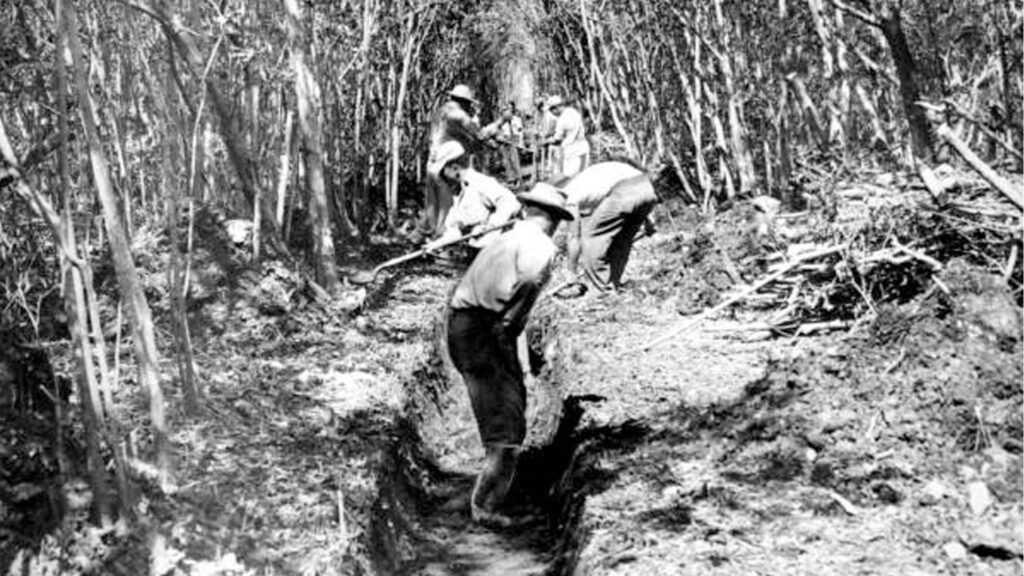By Andrew Kishuni
Recently, the Centers for Disease Control and Prevention partnered with Florida health authorities to investigate malaria cases in Sarasota County. The investigation made national headlines because malaria is rare in the U.S. Local malaria transmission by mosquitoes is nonexistent and cases treated in the U.S. are those of patients who contracted malaria overseas.
Malaria hasn’t threatened Floridians for decades, after an enormous and forgotten campaign between the 1890s and 1910s checked malaria’s 30-million-year reign. Florida’s early history with malaria reflects that of the nation. From that history, there is much to learn about the future of America’s interactions with the disease.
In 1889, the Florida Legislature created the Florida Board of Health, the state’s first health agency, after yellow fever epidemics struck Tampa and Jacksonville. The Board deployed officers to locales like Key West in September 1889 to study mosquito-borne diseases. Their initial efforts against malaria, including partnership with federal authorities at sites like the Mullet Key, St. George Sound and St. John’s River quarantine stations, led to historically low mortality rates in the 1890s.
Authorities had reason for urgency. After typhoid and tuberculosis, malaria was one of Florida’s top three killers in the 1890s. Orange County had the second highest malaria death rate compared to other counties between 1890 and 1893.

At the time, officers didn’t know mosquitoes carried malaria. They believed malaria came from impure soil. In 1896, one officer noticed that “draining of low lands and marshy places … during certain seasons” correlated with a decline in malaria cases. They were close. In 1897, Sir Ronald Ross, while researching malaria in India, discovered that mosquitoes carried the disease. The Florida officers who drained water from wetlands unintentionally denied breeding grounds to malarial mosquitoes. Either way, it worked.
In the early 1900s, authorities aggressively drained swampy areas as the state population grew, which forced residential development into mosquito-infested wetlands. In the Orlando area, the consequences of rapid development were disastrous. Dr. R.L. Harris, Orange County’s health officer in 1900, wrote that there were more malaria cases in neighborhoods around Lake Apopka and the St. John’s River that year than “for the 10 previous years combined.”
To fight malaria, the state supported its drainage program with encyclopedic assessments of the disease and took advantage of droughts, like one in northwest Florida in 1902. The state distributed leaflets on prevention to transportation workers near waterways and encouraged residents to screen their windows and doors, upend pots and barrels holding stagnant water, and sleep under nets during rainy months. One officer even suggested using lighter colors to paint bedroom walls to locate and kill mosquitoes faster at night.
By the early 1910s, malaria rates dropped and cases became less severe, but it wasn’t until officers realized how the environment played a role in projecting the power of mosquitoes that they could reduce the risk of malaria.
When they understood the role of the environment, officers could deny mosquitoes fertile habitats through drainage and ensure responsible residential development in the outskirts of cities. They first needed to acknowledge that malaria was as much an ecological force as it was a medical or epidemiological one. Those early innovations allowed Florida to successfully reduce malaria throughout the 20th century and push it out of the U.S. Clinical treatment wasn’t enough.

These are important lessons for 21st-century Florida. Climate change is tropicalizing subtropical parts of the world through equatorial expansion, which extends the range of travel for malarial mosquitoes previously limited to the tropics. The problem is that Florida will be one of the first states to find itself within that range as the world warms. Florida could face malaria like it did over a century ago.
But Florida has the tools to win, from its strong medical system to its environmental control experience. Malaria doesn’t have to creep back up Florida’s coasts, even if Florida will be ground zero for a warming America. If the state focuses on mitigating the dangers of climate change to the state’s ecology, Florida can serve as the model for the rest of the country on malaria control.
It just takes climate change awareness to do it. As one officer wrote in 1909, “The overthrow of malaria lies with the people themselves.”
Andrew Kishuni is a graduate student in history at the University of Central Florida. He researches the history of science and disease.
This opinion piece was originally published by the Orlando Sentinel, which is a media partner of The Invading Sea. If you are interested in submitting an opinion piece to The Invading Sea, email Editor Nathan Crabbe at ncrabbe@fau.edu. Sign up for The Invading Sea newsletter by visiting here.




Another factor in controlling malaria in Florida, which was endemic as late as the 1940s was the increased use of screen windows and screen doors as well as spraying insecticides to reduce mosquito populations. There are also better mosquito repellents today.;